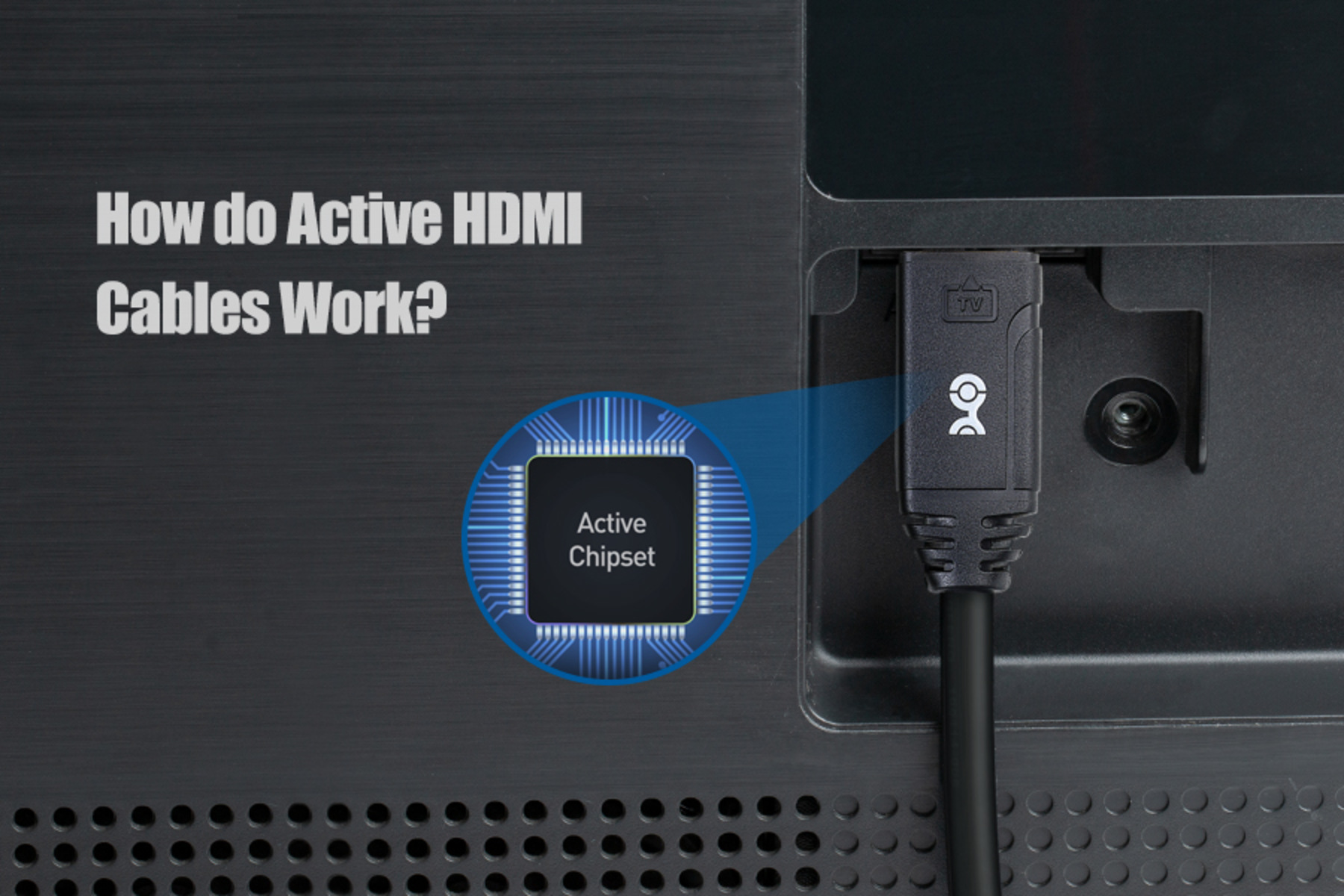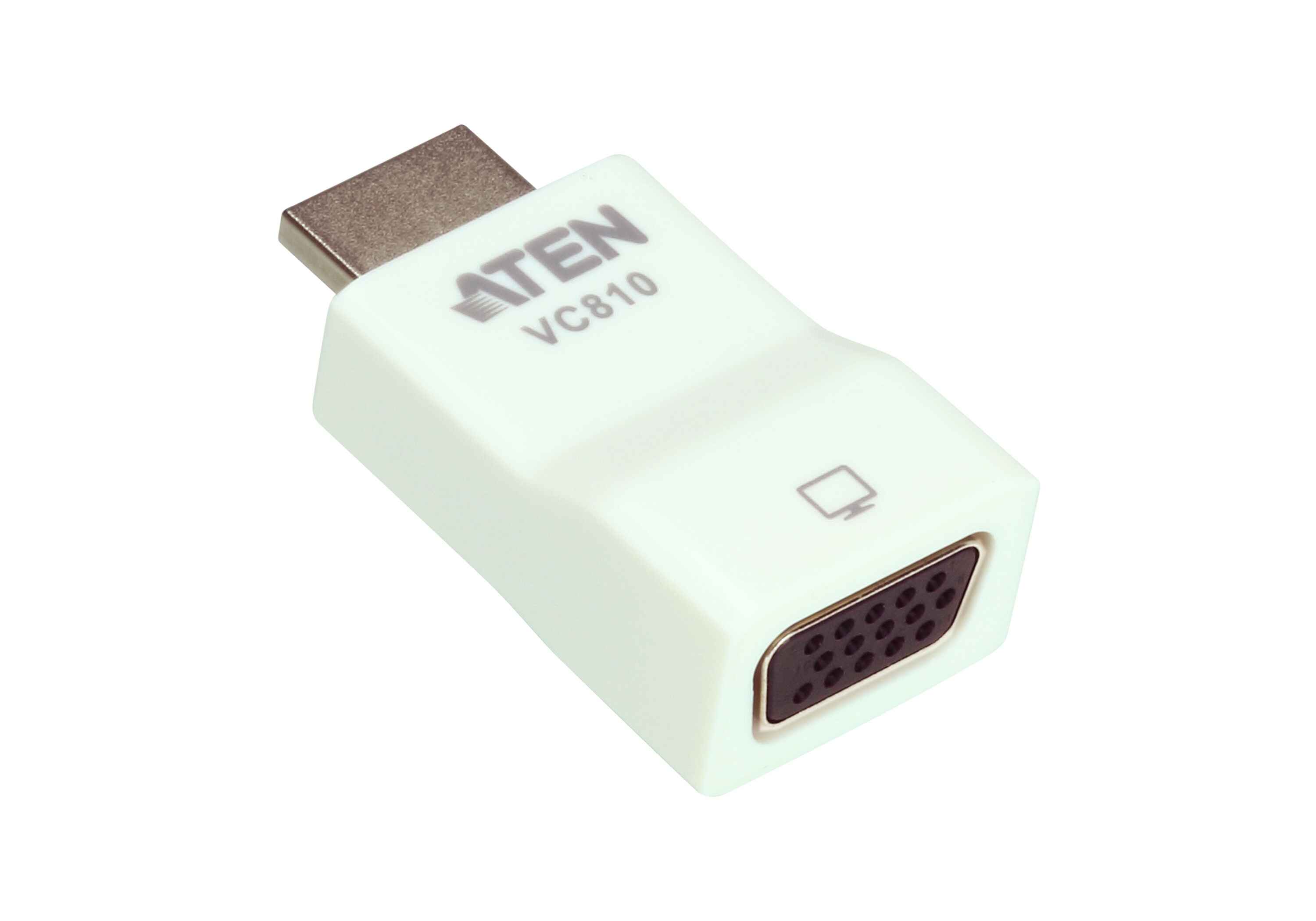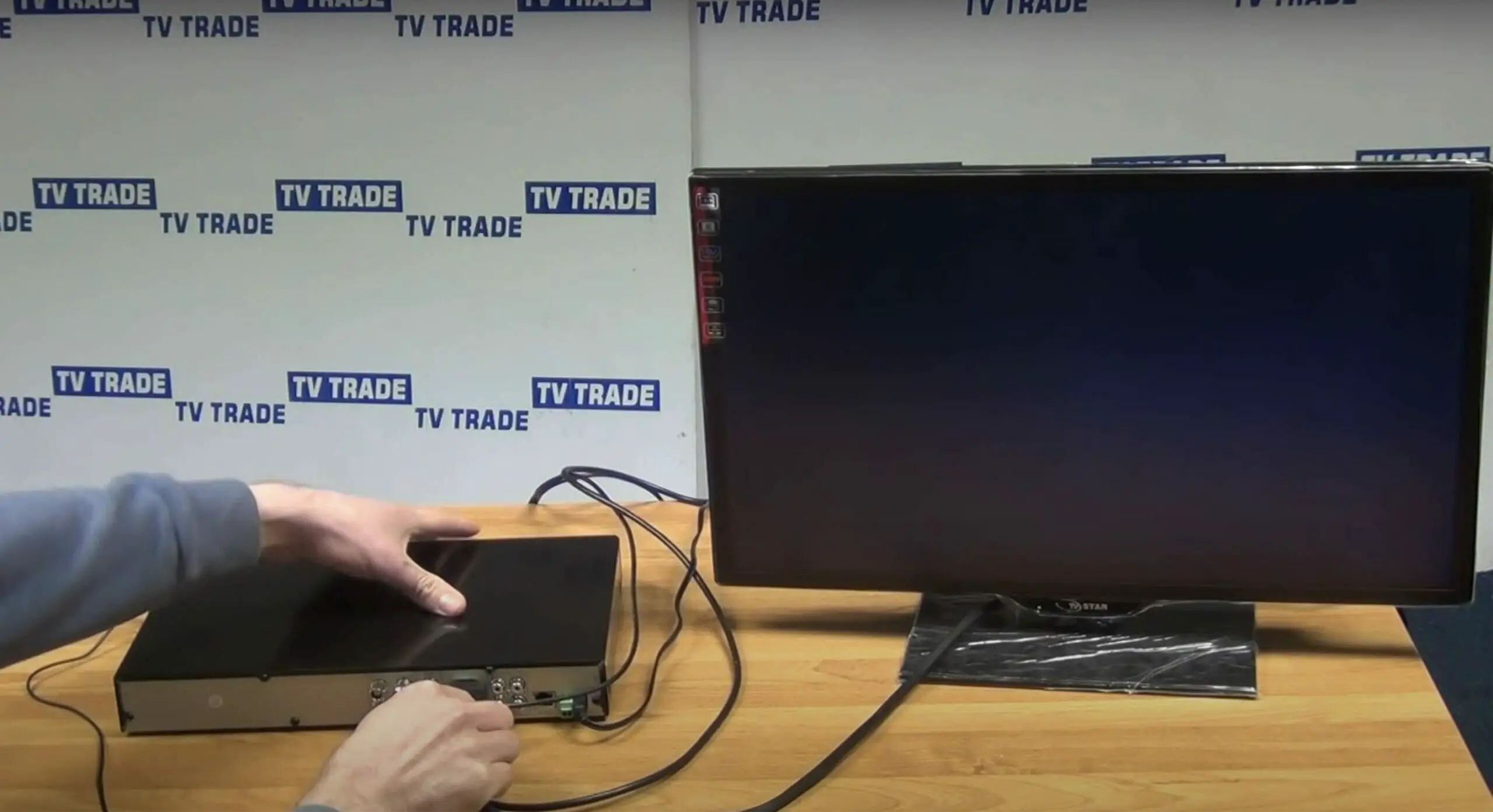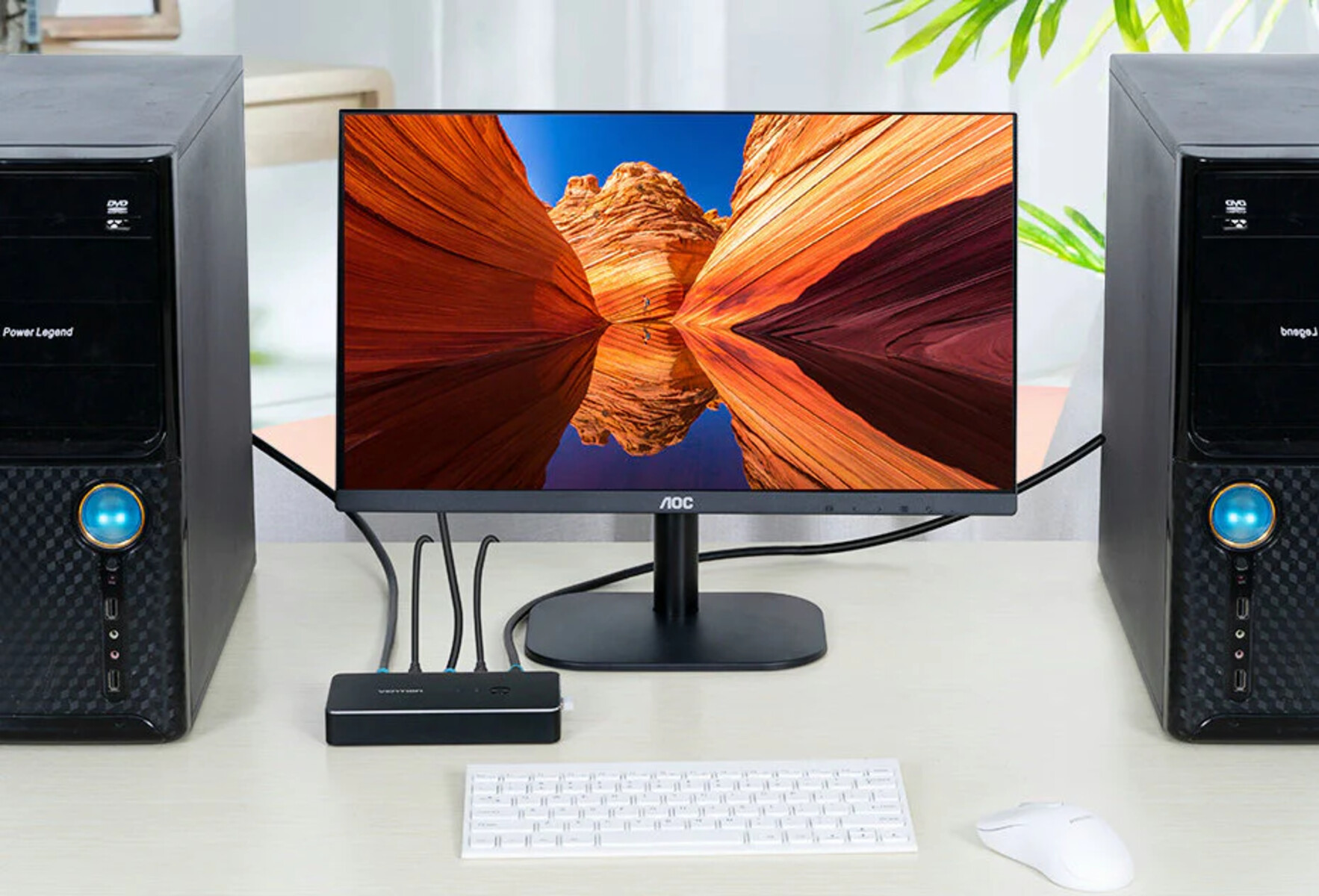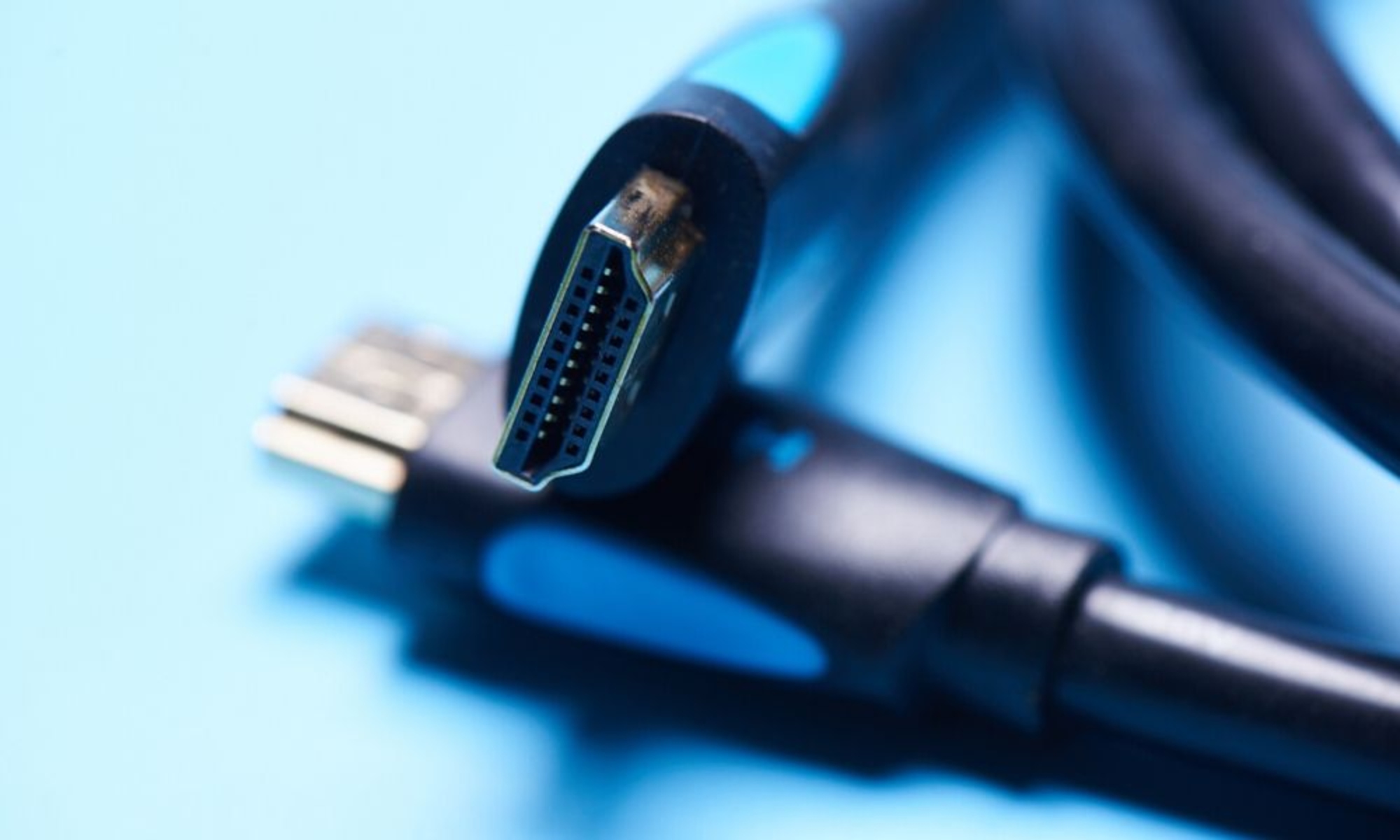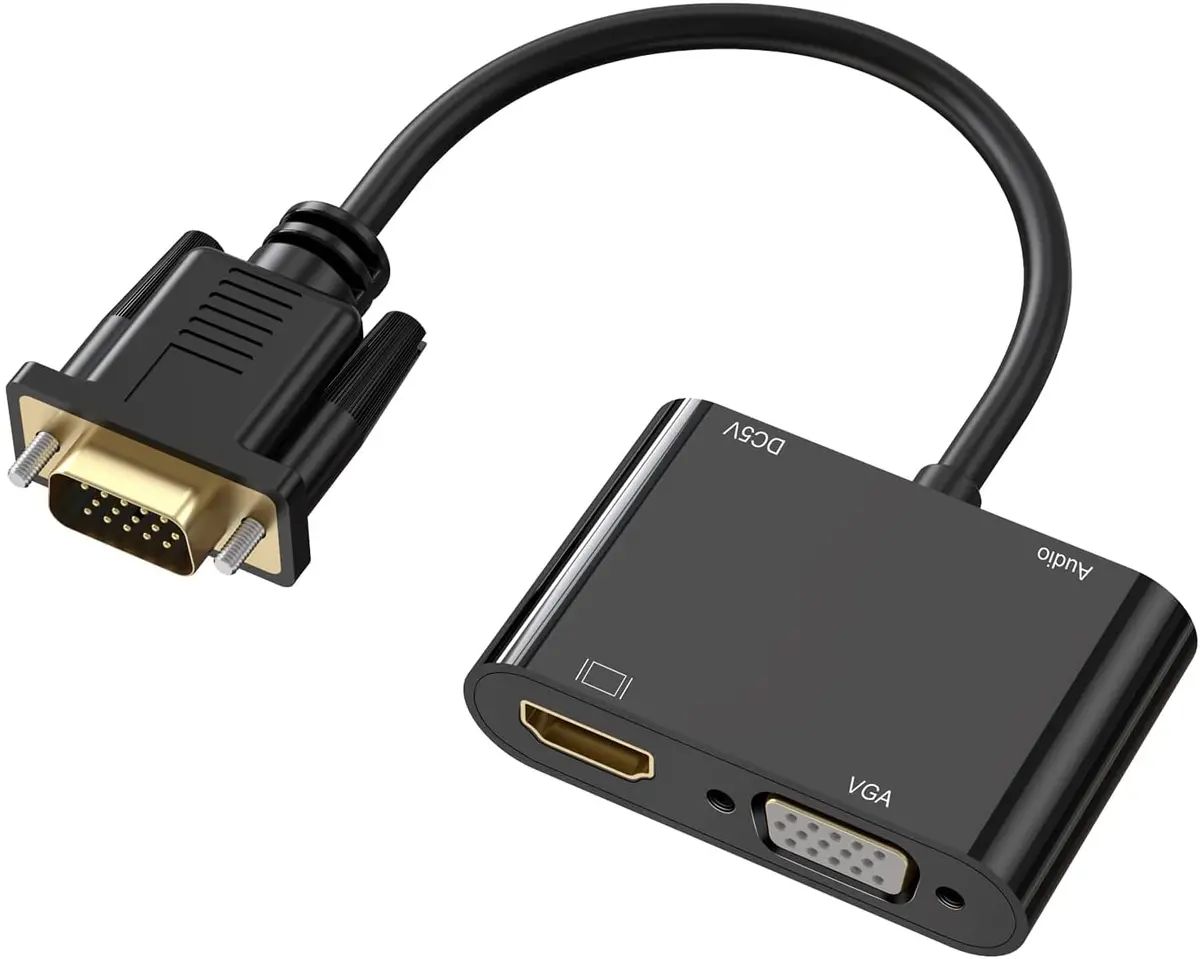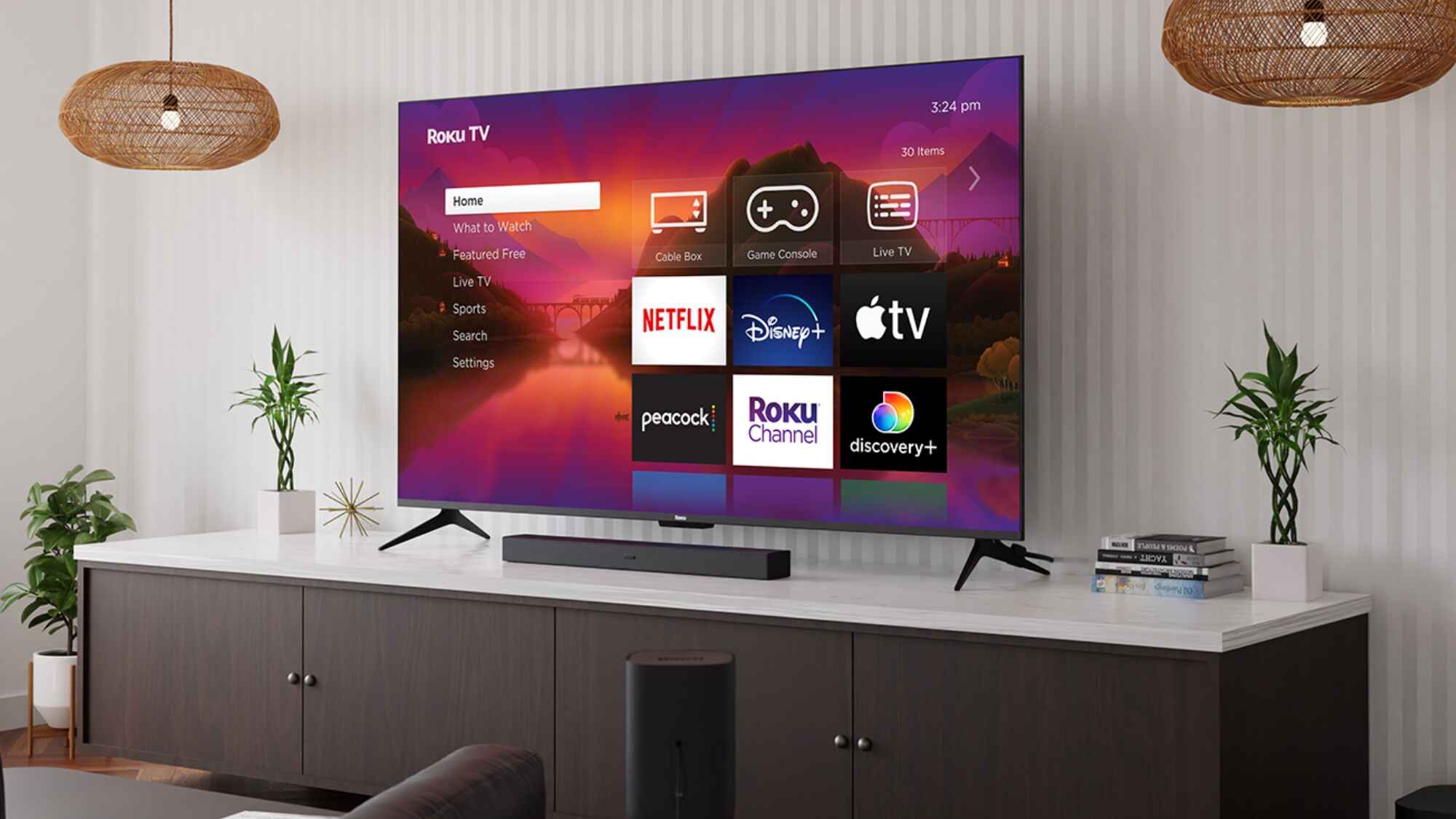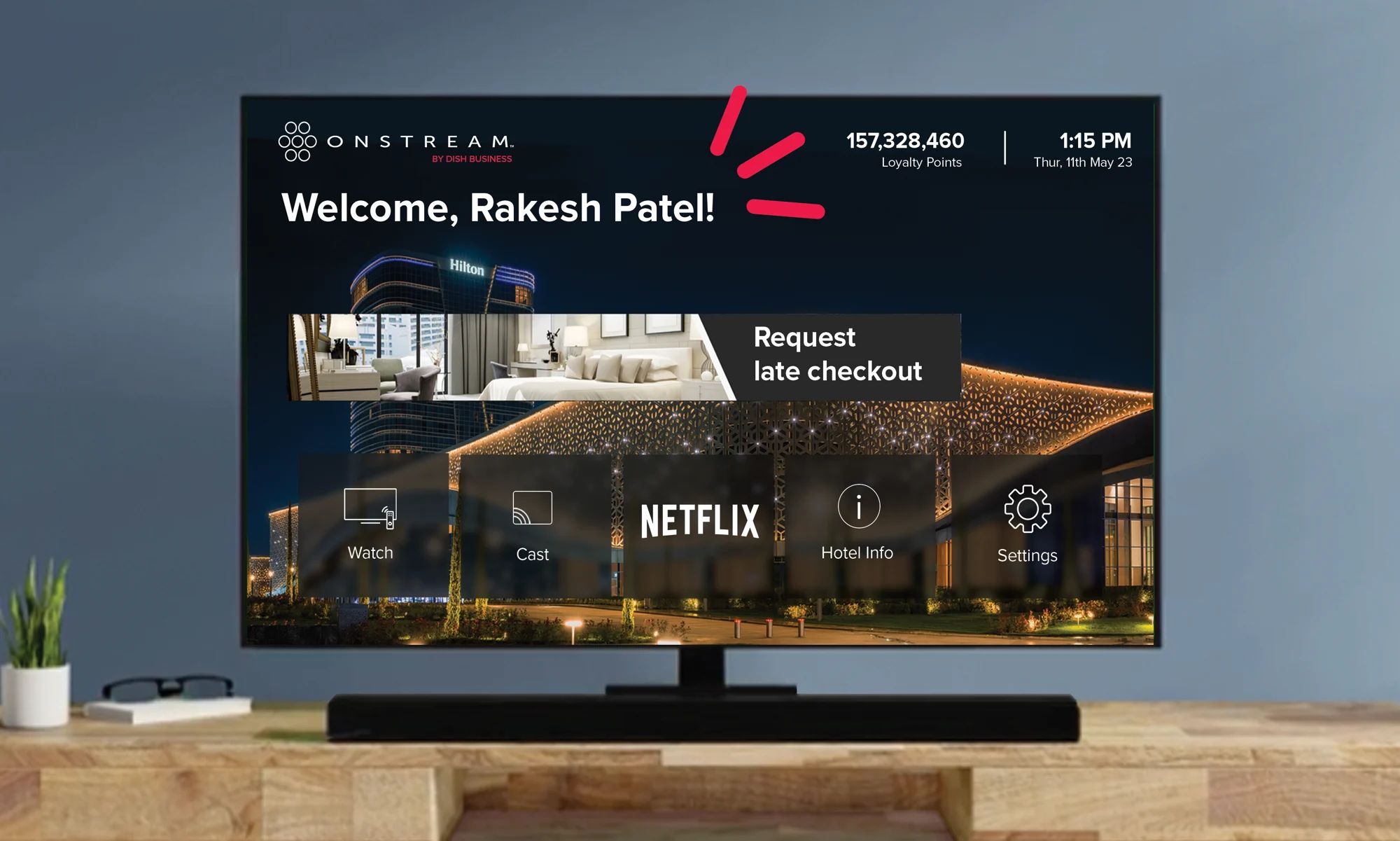Introduction
Welcome to the world of High-Definition Multimedia Interface (HDMI) cables! In today’s fast-paced digital age, HDMI has become the go-to interface for connecting various devices such as televisions, gaming consoles, Blu-ray players, and laptops. Whether you’re a tech enthusiast or someone looking to upgrade their home entertainment setup, understanding HDMI cables is crucial.
But what exactly is HDMI? HDMI is a standardized audio-video interface that transmits uncompressed digital data. It revolutionized the way we connect devices, offering a single cable solution for transmitting high-quality audio and video signals. Gone are the days of messy cables and cumbersome connectors.
Now, let’s delve into the world of HDMI cables and explore the concept of active HDMI cables. You may have come across the term “active HDMI cable” but wondered what sets it apart from regular HDMI cables. In this article, we’ll dissect the features and benefits of active HDMI cables, as well as their drawbacks.
What is HDMI?
HDMI, short for High-Definition Multimedia Interface, is a widely used audio-video interface that allows for the transmission of high-quality digital signals between devices. Introduced in 2003, HDMI has become the industry standard for connecting devices like TVs, home theater systems, gaming consoles, and audio receivers.
HDMI cables are designed to transmit uncompressed audio and video data, providing a seamless and high-quality viewing experience. Unlike analog connections, HDMI ensures that there is no loss of picture or sound quality during transmission.
One of the key advantages of HDMI is its ability to transmit both audio and video signals through a single cable. This eliminates the need for multiple cables and simplifies the setup process. Additionally, HDMI supports various video resolutions, including standard-definition (SD), high-definition (HD), and ultra-high-definition (UHD or 4K), making it compatible with a wide range of devices and display technologies.
Furthermore, HDMI cables support advanced audio formats, such as Dolby TrueHD and DTS-HD Master Audio, offering immersive surround sound capabilities for a truly cinematic experience. This makes HDMI particularly popular among home theater enthusiasts.
HDMI has evolved over the years to accommodate new technologies and features. The latest version, HDMI 2.1, introduced in 2017, offers higher bandwidth, enabling support for higher resolutions, faster refresh rates, and enhanced audio formats.
Overall, HDMI has revolutionized the way we connect and enjoy our multimedia devices. Its simplicity, versatility, and high-quality transmission capabilities have made it an indispensable part of modern home entertainment systems.
Understanding HDMI Cables
HDMI cables are the physical connectors that enable the transmission of audio and video signals between devices. They come in different lengths and versions to cater to various needs and compatibility requirements.
When it comes to understanding HDMI cables, it’s essential to familiarize yourself with their different versions. The most common HDMI versions are HDMI 1.4, HDMI 2.0, and HDMI 2.1. These versions differ in terms of their supported resolutions, refresh rates, and features.
HDMI cables also come in various categories, including Standard HDMI, High-Speed HDMI, Premium High-Speed HDMI, and Ultra High-Speed HDMI. These categories denote the cable’s performance capabilities and determine its ability to handle higher resolutions, refresh rates, and other advanced features.
Another factor to consider when understanding HDMI cables is their connector types. HDMI connectors can have different shapes and sizes, including the standard Type A, Mini HDMI (Type C), Micro HDMI (Type D), and the latest HDMI 2.1 connector, which features an enhanced shape with more pins for increased performance.
It’s important to note that HDMI cables are backward compatible. This means that a higher version HDMI cable can be used with devices that have an older HDMI version. However, the cable’s performance will be limited to the capabilities of the device it is connected to.
Furthermore, HDMI cables support different audio and video formats, including 3D, Deep Color, Audio Return Channel (ARC), and Ethernet over HDMI. These features allow for enhanced visual experiences, seamless integration with audio systems, and network connectivity through HDMI cables.
Understanding the specifications, versions, and capabilities of HDMI cables is crucial when selecting the right cable for your specific needs. By considering the resolution and refresh rate requirements of your devices, as well as the features and connectivity options you desire, you can choose an HDMI cable that ensures optimal performance and compatibility.
What Makes HDMI Cables Active?
HDMI cables are classified into two main types: passive and active. While passive HDMI cables are the most common and widely used, active HDMI cables have additional features that enhance their performance. Understanding what makes HDMI cables active is essential to appreciate their benefits.
The main difference between passive and active HDMI cables lies in their ability to extend the length of the cable without compromising signal quality. Passive HDMI cables can often maintain signal integrity for shorter distances, typically up to 15 meters (50 feet). Beyond this length, signal degradation can occur.
Active HDMI cables, on the other hand, incorporate built-in active components to boost the signal and enable longer cable runs without degradation. These active components, usually in the form of integrated circuits or signal repeaters, regenerate the digital signal along the cable, ensuring that it maintains its quality over longer distances.
One key feature of active HDMI cables is their ability to support longer cable runs. Active cables can span much greater distances, often up to 30 meters (100 feet) or even more, while still delivering a high-quality audio and video signal. This makes them ideal for large home theaters, conference rooms, or installations where longer cable lengths are required.
Additionally, active HDMI cables can support higher resolutions and refresh rates compared to their passive counterparts. This makes them suitable for use with 4K Ultra High-Definition (UHD) displays, high-refresh-rate monitors, or other demanding audio and video setups.
Active HDMI cables also offer superior performance when it comes to eliminating latency or input lag. This means that when connecting gaming consoles, computers, or other devices that require fast and responsive video output, active HDMI cables can provide a smoother and more immersive gaming or viewing experience.
Overall, what truly sets active HDMI cables apart is their ability to maintain signal integrity over extended distances and support advanced audio and video formats. If you have a setup that requires longer cable runs or demands high-quality audio and video performance, using active HDMI cables can be a reliable and effective solution.
How Do Active HDMI Cables Work?
To understand how active HDMI cables work, it’s essential to look at the integrated circuits or signal repeaters that are embedded within these cables. These active components play a crucial role in maintaining signal integrity over extended distances.
Active HDMI cables contain electronic components within the cable itself. These components actively amplify and regenerate the digital signal as it travels along the cable. The integrated circuits or signal repeaters ensure that the signal remains strong and stable, compensating for any degradation that may occur due to cable length or other factors.
When an HDMI source device, such as a Blu-ray player or gaming console, sends an audio or video signal through an active HDMI cable, the signal is first received by the integrated circuit within the cable. The integrated circuit then processes the signal, amplifies it if necessary, and regenerates the digital data to ensure that it remains clear and intact.
Once the signal has been processed and amplified, it continues its journey along the cable to the HDMI display or receiver. The integrated circuit within the cable acts as a booster, maintaining the signal strength and quality, even over long distances.
Active HDMI cables are designed to compensate for signal loss and maintain signal integrity, making them suitable for longer cable runs where passive cables may experience degradation. These cables provide a reliable and efficient way to transmit high-quality audio and video signals over extended distances.
It’s important to note that active HDMI cables require a power source to operate the integrated circuits or signal repeaters within them. Most active HDMI cables draw power from the HDMI source device itself, while others may require an external power source. This additional power ensures that the active components within the cable have the necessary energy to amplify and regenerate the signal effectively.
Overall, active HDMI cables work by incorporating integrated circuits or signal repeaters to actively boost and regenerate the digital signal as it travels along the cable. This ensures that the audio and video signals remain strong and clear, even over longer distances, providing a reliable and high-quality connection between HDMI devices.
Advantages of Active HDMI Cables
Active HDMI cables offer several advantages over passive HDMI cables, making them a preferred choice in certain situations where extended cable runs or enhanced performance is required. Let’s explore some of the key advantages of using active HDMI cables:
- Longer Cable Runs: Active HDMI cables are capable of maintaining signal integrity over longer distances compared to passive cables. They can span up to 30 meters or more without signal degradation, making them ideal for installations that require extended cable lengths.
- Superior Signal Quality: By incorporating integrated circuits or signal repeaters, active HDMI cables amplify and regenerate the digital signal as it travels along the cable. This ensures that the audio and video signals remain clear and of high quality, even over long distances.
- Support for Higher Resolutions: Active HDMI cables are designed to support higher resolutions, such as 4K Ultra High-Definition (UHD) and even 8K, without compromising signal quality. They can handle the increased bandwidth required to transmit these high-resolution formats.
- Enhanced Refresh Rates: Active HDMI cables are well-suited for applications that demand high refresh rates, such as gaming or fast-paced video content. They can provide smoother motion and reduced input lag compared to passive cables.
- Compatibility with Advanced Audio Formats: Active HDMI cables support advanced audio formats, including Dolby TrueHD and DTS-HD Master Audio, delivering immersive and high-fidelity sound experiences. This makes them a great choice for home theater setups.
- Minimal Signal Loss: The active components in these cables compensate for signal loss, ensuring that the audio and video signal remains strong and clear throughout the entire cable length.
When considering the advantages of active HDMI cables, it’s important to keep in mind that their performance is dependent on the quality of the cables and the devices they are connected to. Opting for certified and high-quality active HDMI cables will ensure optimal results and a reliable connection between your HDMI devices.
Disadvantages of Active HDMI Cables
While active HDMI cables offer significant advantages, it’s important to consider their potential drawbacks as well. Here are some of the disadvantages associated with using active HDMI cables:
- Higher Cost: Active HDMI cables tend to be more expensive compared to passive cables. The inclusion of integrated circuits or signal repeaters increases the production cost, resulting in a higher price tag. This can be a factor to consider if you’re on a tight budget.
- Power Requirement: Active HDMI cables require a power source to operate the integrated circuits or signal repeaters within them. Most active cables draw power from the HDMI source device itself. However, certain longer-distance active cables may require an external power source, adding an extra step to the setup process.
- Compatibility: While active HDMI cables are generally compatible with a wide range of devices, there may be cases where they are not fully compatible. It’s essential to verify the compatibility of your devices and the cable’s specifications to ensure optimal performance.
- Thicker and Less Flexible: Due to the incorporation of active components, active HDMI cables tend to be thicker and less flexible than passive cables. This can make them slightly more challenging to route and manage in tight spaces or behind wall-mounted displays.
- Potential Signal Interference: The active components within the cable can be susceptible to electromagnetic interference, which can degrade the signal quality. However, the impact of interference is typically minimal and can be mitigated by using well-shielded, high-quality active HDMI cables.
It’s important to note that while these disadvantages exist, they may not outweigh the benefits depending on your specific needs and setup requirements. Considering the trade-offs and understanding your priorities will help you make an informed decision about whether active HDMI cables are the right choice for your audio and video connectivity needs.
When Should You Consider Using Active HDMI Cables?
Active HDMI cables are a great choice in specific scenarios where their unique advantages outweigh their disadvantages. Here are some situations in which you should consider using active HDMI cables:
- Long Cable Runs: If you need to connect devices that are far apart, such as in large home theaters, conference rooms, or installations, active HDMI cables are ideal. They can maintain signal integrity over longer distances without experiencing degradation.
- Higher Resolutions and Refresh Rates: If you have a 4K UHD or higher-resolution display, or if you require high refresh rates for gaming or fast-paced video content, active HDMI cables are designed to provide the necessary bandwidth and performance for these demanding applications.
- Advanced Audio Setup: For home theater enthusiasts or those who want to enjoy immersive audio experiences, active HDMI cables support advanced audio formats like Dolby TrueHD and DTS-HD Master Audio. They ensure optimal audio quality and compatibility between devices.
- Professional Installations: Active HDMI cables are commonly used in professional settings where reliability and performance are crucial, such as in commercial venues, conference centers, or digital signage installations. The ability to maintain signal integrity over long distances makes them a reliable choice in these environments.
- Elimination of Signal Quality Concerns: If you have experienced signal degradation or quality issues with passive HDMI cables, switching to active HDMI cables can provide a solution. They ensure a robust and clear signal transmission, minimizing the risk of distortion or loss.
Ultimately, the decision to use active HDMI cables depends on your specific needs and requirements. It’s important to assess factors such as cable length, resolution, refresh rate, audio needs, and budget to determine whether the benefits of active HDMI cables justify their use in your particular setup.
Conclusion
HDMI cables have revolutionized the way we connect and enjoy audio and video devices, providing a seamless and high-quality transmission of digital signals. While passive HDMI cables are the standard choice for most applications, active HDMI cables offer distinct advantages in specific situations.
Active HDMI cables excel at maintaining signal integrity over longer cable runs, supporting higher resolutions and refresh rates, and delivering advanced audio formats. Their ability to amplify and regenerate the digital signal enables them to overcome the limitations of passive cables, making them ideal for large home theaters, professional installations, or setups that demand top-quality audio and video performance.
However, it’s important to consider the potential drawbacks of active HDMI cables, such as higher cost, power requirements, and slightly reduced flexibility. It’s essential to evaluate your specific needs, budget, and setup requirements to determine whether the benefits of active HDMI cables outweigh these potential downsides.
In the end, active HDMI cables provide a reliable and efficient solution for those who require extended cable lengths, higher resolutions, and advanced audio capabilities. By understanding the differences between passive and active HDMI cables and assessing your specific needs, you can make an informed decision and enjoy a seamless and immersive audio-visual experience in your home entertainment system or professional setup.







